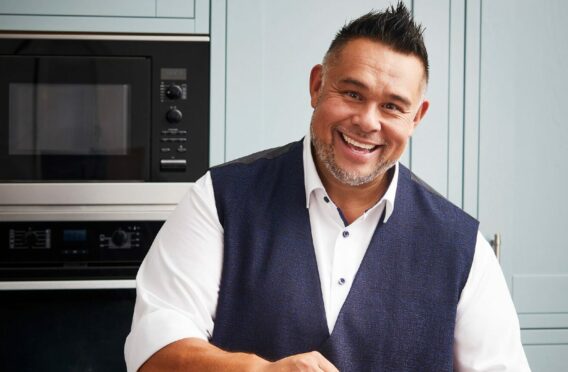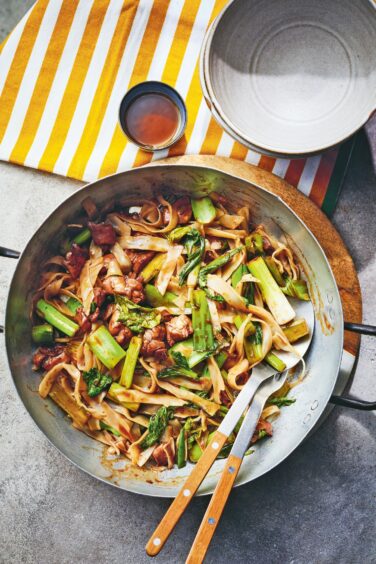
Kwoklyn Wan bought a campervan two years ago, and you can be sure he hasn’t been cooking up basic fare on the road.
“We were eating so well – it was quite funny, actually. We’d look over to the people next door, and they were having their typical beans, bangers and bacon and stuff like that – and we were having squids and Macanese curry, and all these other bits and bobs,” Wan remembers with palpable glee.
Wok cooking is a big part of Chinese cuisine, and that requires a fierce heat – something that’s tricky to replicate out the back of a campervan.
“We solved that problem by having an electric hook-up and taking an induction cooker with us,” the chef reveals – keen to give his cooking “a bit more oomph”.
Even so, cooking out of a campervan isn’t quite the same as being in a professional kitchen – and it required Wan, 49, to think a bit differently about his normal recipes.
“I thought, how could we simplify these dishes to make it really easy for cooking in a campervan and caravan?” – and so he began developing more one-pot or wok meals, which is the basis for his latest book.
One Wok, One Pot is Wan’s sixth cookbook – and he’s written them at a remarkable rate, having released his first in 2019. While Wan admits he suffers from occasional writer’s block, a love of food spurs him on.
“I’m a big guy. I’ve enjoyed food my entire life – I grew up around food, in restaurants and takeaways. When there’s a special occasion, we eat, when there’s not a special occasion, we eat,” he reflects. “So, it made it (writing the books) very simple in a sense that we were always hungry – I was always hungry.
“I try to pen between 10 and 12 recipes a day when I’m writing. It sounds crazy. What I do, I write the recipe – I might see something, whether that is on social media or on TV, and then I think, ‘How would I do that? How would I change it?’ And I write a recipe.
“Once I’ve written the recipes, I then go into the kitchen and test them. I say, ‘OK, this didn’t work, or that flavour didn’t work, or you’ve got to add this at a certain time’.”
Now he’s on to book six, Wan has to think a bit more creatively. “The first couple of books, I was writing Chinese takeaway dishes – things you can pretty much have regardless of whether you’re sitting in the middle of London, Manchester, or even New York – you’ll get similar dishes.
“But as the books have progressed, I’ve obviously had to start thinking outside of the box – especially with One Wok, One Pot, because I was thinking, ‘How can we create these dishes that are going to be substantial enough to class them as a one-pot dish?’
“We can always do a chicken stir-fry in a wok but that’s been written 1,000 times. So, how can we do a chicken stir-fry that’s actually got some body to it?”
While Wan might be best known for his cookbooks and TV appearances nowadays, he’s been working in Chinese restaurants and takeaways for more than 30 years – and he’s picked up useful tips and tricks for home cooks. “Preparation” is his top piece of advice. “When you work in any commercial kitchen, you’ll find everything’s out and ready for you – you’re not having to worry about whether the onions are chopped, or the meat’s been sliced into pieces, or even if it’s been velveted – a Chinese technique we use where we tenderise the meat first.
“When you’re cooking at home, especially if you’re thinking, ‘We’ve got an hour, I want to try to get dinner on the table’ – you’re going to try to fit all of that into your cooking time. Wok cooking is pretty minimal anyway – we’re talking a couple of minutes – but the prep will sometimes take you 45 minutes.”
One Wok, One Pot, photography by Sam Folan, published by Quadrille, £16.99, is out now

Enjoy the convenience of having The Sunday Post delivered as a digital ePaper straight to your smartphone, tablet or computer.
Subscribe for only £5.49 a month and enjoy all the benefits of the printed paper as a digital replica.
Subscribe © Press Association Images
© Press Association Images